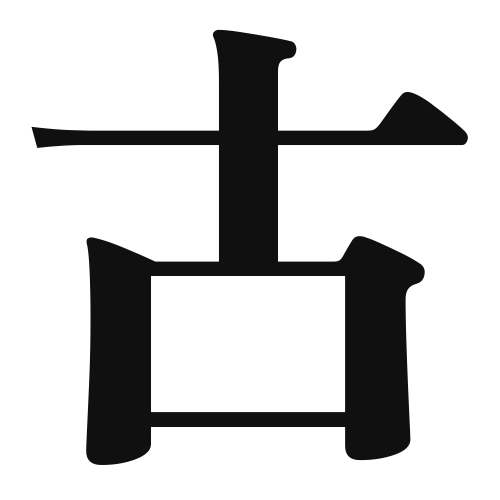1. Overview of Meaning
The kanji “古” (pronounced “ko” or “furui”) means “old” or “ancient.” It is often used to describe something that has existed for a long time or has historical significance.
2. Formation and Radical
The kanji “古” is a pictogram that represents an old object or a relic from the past. It is classified as a pictographic character because its shape resembles an ancient artifact. The radical for “古” is 十 (ten), which is located at the bottom of the character.
3. Examples of Usage
Common words and phrases that include “古” are:
- 古代 (kodai) – ancient times
- 古本 (furuhon) – used book
- 古い (furui) – old
Example sentences in daily conversation:
- この古い家は歴史があります。 (This old house has history.)
- 彼は古代の文化に興味があります。 (He is interested in ancient cultures.)
4. Synonyms and Antonyms
Similar kanji with related meanings include:
- 旧 (kyuu) – meaning “old” or “former,” but often refers to something that has been replaced or is no longer in use.
Antonyms include:
- 新 (shin) – meaning “new,” which represents something that is recent or modern.
5. Cultural and Historical Background
The kanji “古” is deeply connected to Japanese culture, often appearing in contexts related to history and tradition. It is used in various proverbs and idiomatic expressions, such as:
- 古い言い伝え (furui iitsutae) – old tales or legends.
- 古きを訪ねて新しきを知る (furuki wo tazunete atarashiki wo shiru) – “To seek the old is to know the new,” emphasizing the importance of history in understanding the present.
